The Dig
The photo below shows the site prior to any digging. Nothing of the original mill could be seen so the site was strimmed and probed to get a general idea of the structure. The mill race and associated stonework is, at the moment, behind a barbed-wire fence and not available for digging. However, some surface investigation along the race was allowed.
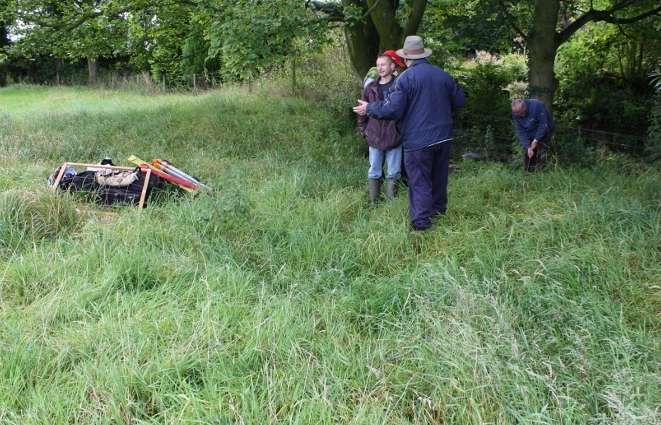
A number of finds appeared on the surface or within the demolition rubble which caused some debate.
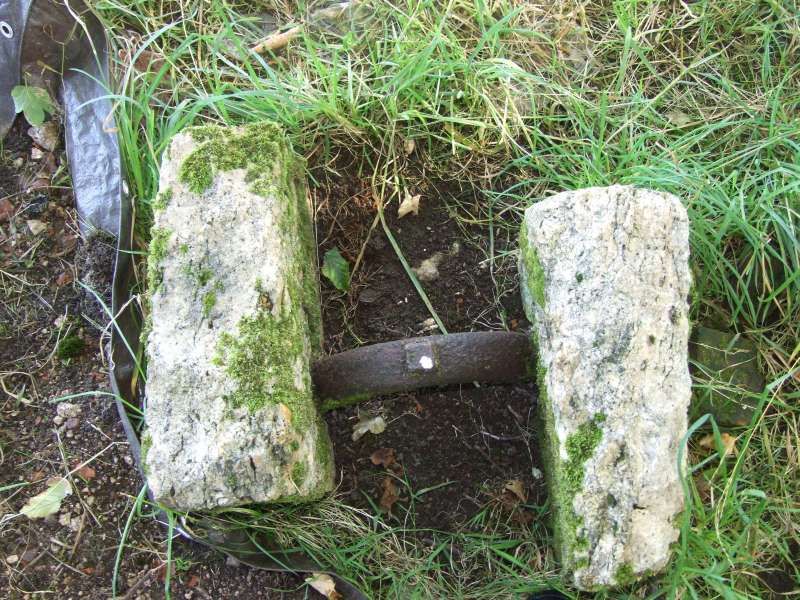
The two pieces of stone were slightly offset from a semicircular piece of metal that had, on the top, another piece of metal of square cross-section. At the time of the discovery no-one had any idea of it's use. Another fragment of stone was found nearby. The weight and hardness was a surprise to all.
After much research the following comment seemed to be conclusive.
Regarding the photograph, this is the centre of the upper millstone of a pair. The "bridge" connecting the two blocks of French burr is the cast-iron part which supports the upper stone. It locks into a projecting "mace" on top of the "spindle", and imparts the rotary motion to the millstone. If you turn the bridge over you will see a depression. This sits on the top of the spindle and takes all the weight of the stone. This stone and bridge is absolutely typical for the 19th, or early 20th, century.
More research on the French Burr gives the information that the stone originally comes from a quarry to the NE of Paris.
Bits of hand-made pottery were frequent finds in the rubble.
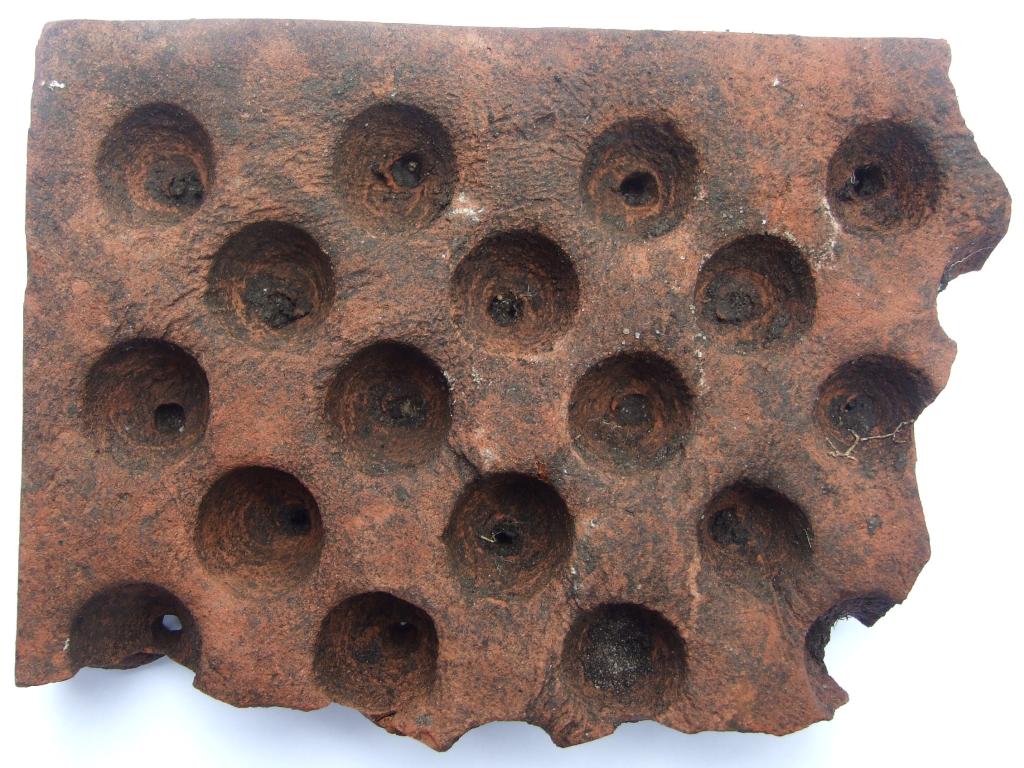
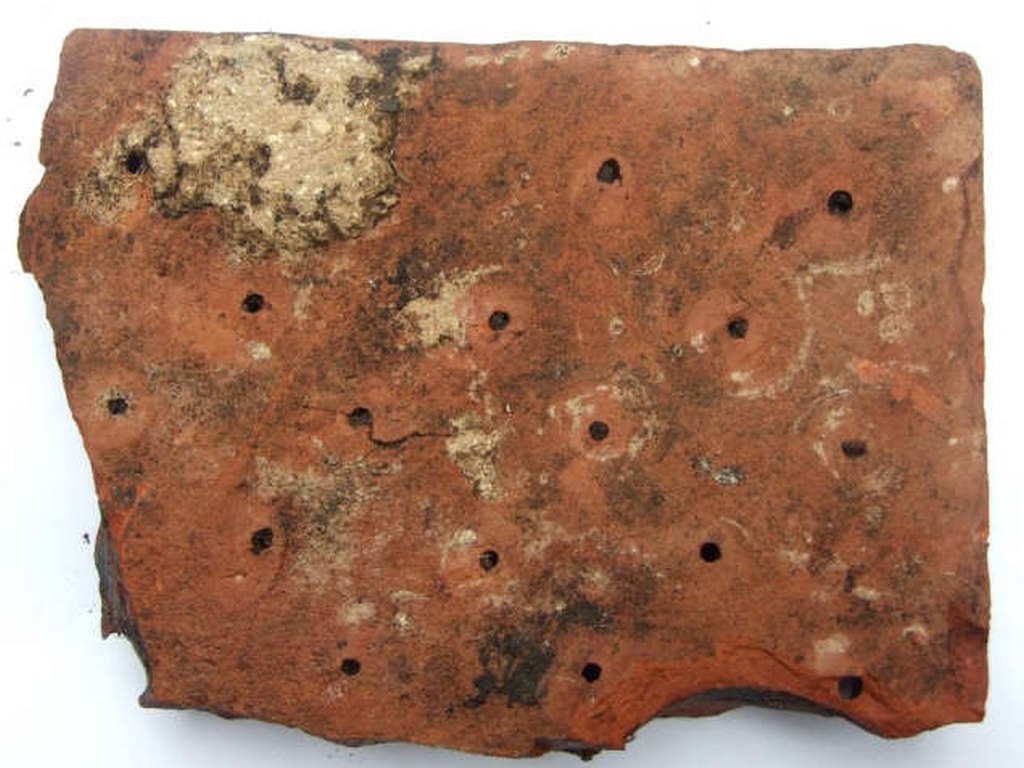
These above tiles (now known to be Kiln tiles) appear to be handmade. The reverse side (on the right) shows the cement and so it was fixed by this side. More information can be found here.
A decision was made to reveal the walls and remove the general rubble. Once this has been achieved the site will be recorded and only then the main archaeological digging would take place. This, depending upon the time taken to clear the site, could possibly be by a "big dig."
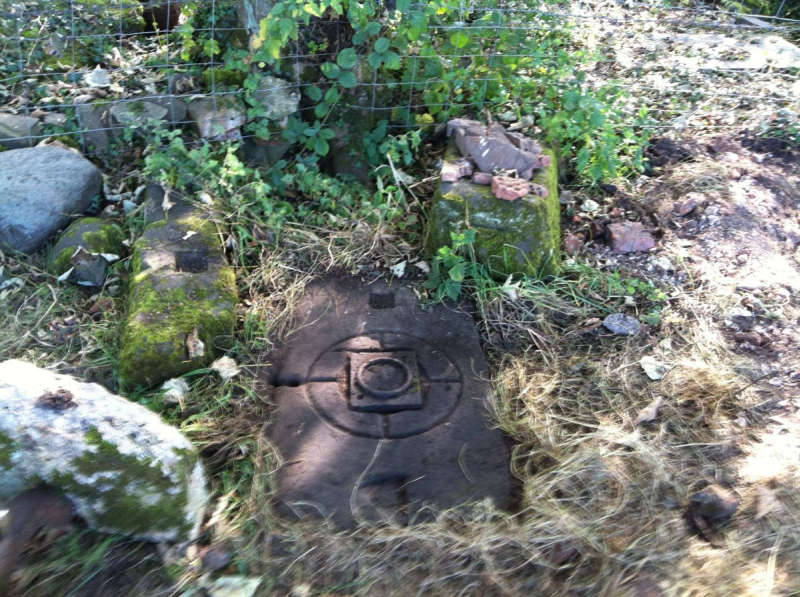
For a long time there was some dispute as to the use of this object. The suggestion of it being a stargate has been abandoned and it is more likely to be the bottom of a cheese press. Only when very similar press bases were seen did this become a certainty. But why was it in a mill?
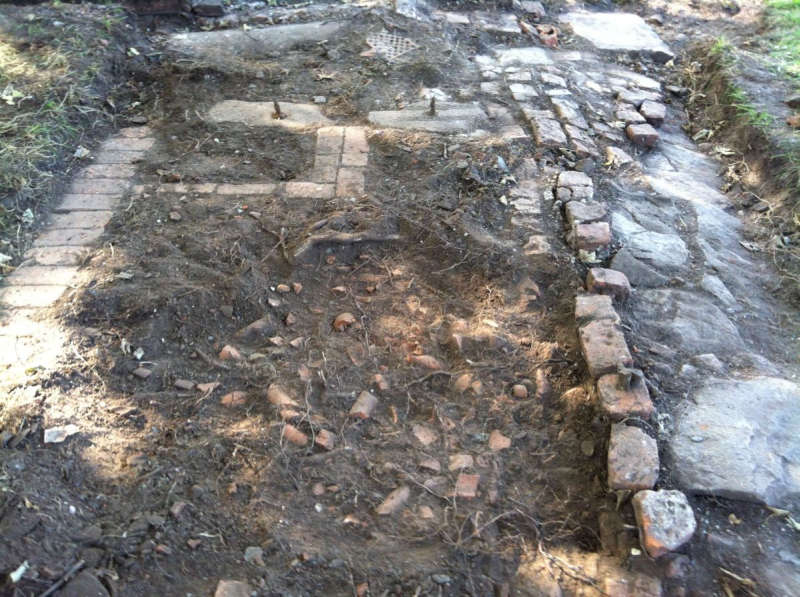
Part of the wall and the clay "floor" seems to be embedded with small pieces of pottery. On closer inspection it was mostly portions of clay pipe. Some were bent into strange shapes as if acted on by intense heat. A detailed photograph will follow.
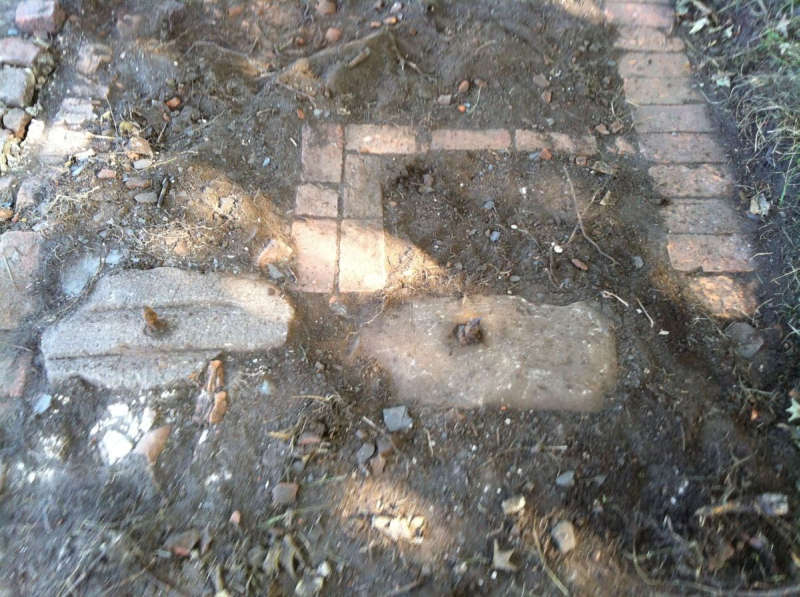
More of the Northern section with, what appears to be a series of old mill stones embedded in the floor layer. But why should they be in the floor and why have they metal spikes in the centre? One suggestion was that the spikes could be holding up a partition wall - or at least stop it from moving.
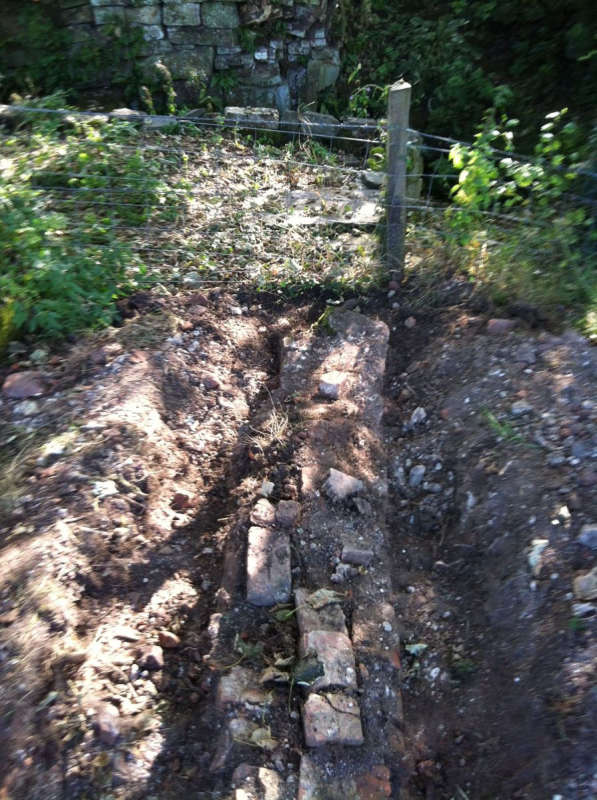
This is a view of the Western wall pointing towards the mill race. The wall varies in thickness but this may point to a multiphasic building - which is what we expect for a building that has changed it's purpose over the years.
More rubble was removed on 24th September, 2014. Two more stones were uncovered similar to the ones shown in the bottom left photograph and they continued in a line towards the right. It turns out that the stones were NOT embedded into the floor but placed on top of the floor.
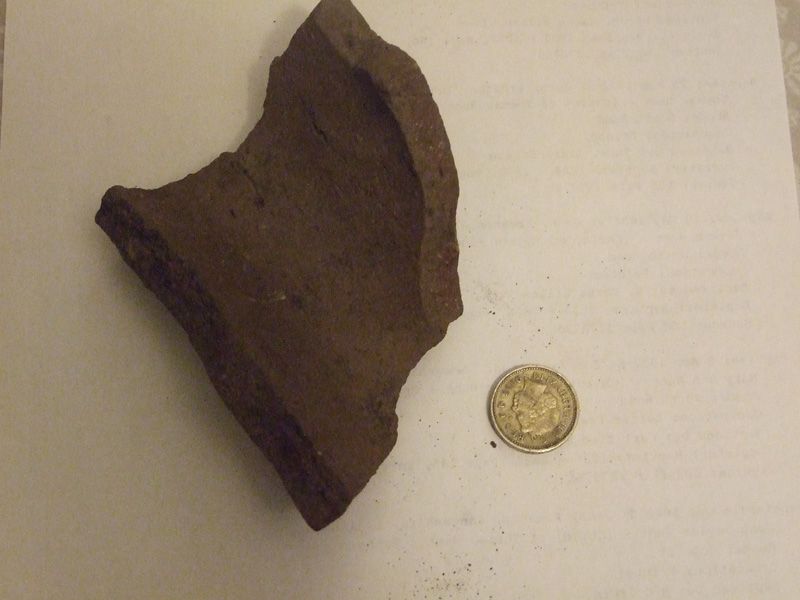
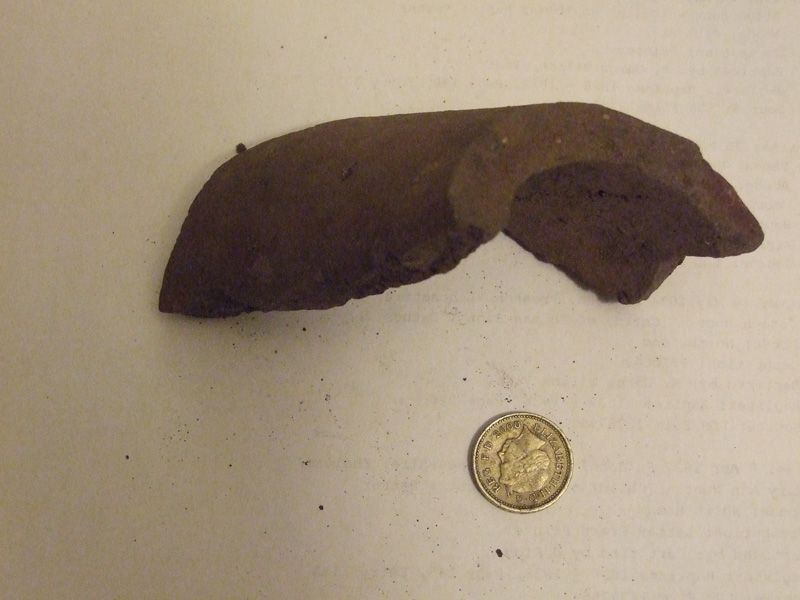
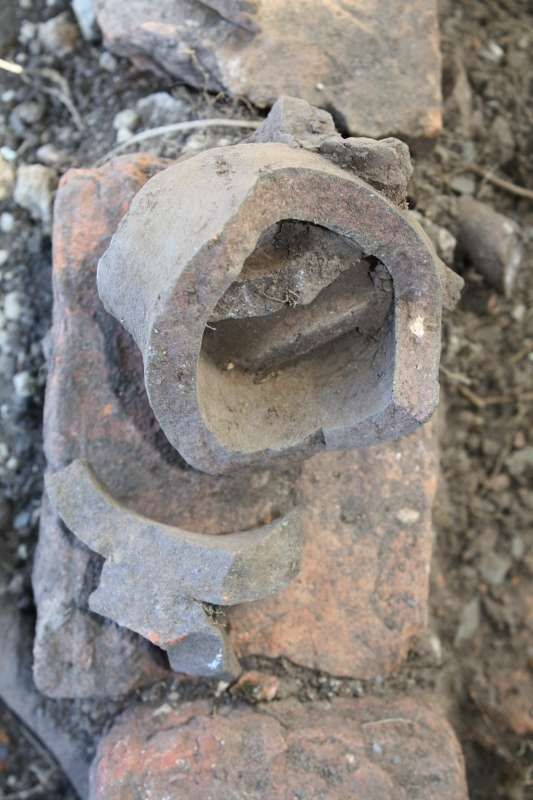
The first two images are of broken pipe in the order of 3 inches diameter found on what we initially thought to be the floor. Presumably part of the Kiln. Image shown to the right is made from the same pottery-type material. One suggestion is that is a way of distributing the heat from the Kiln furnace through different pipes. If any reader has a better suggestion then perhaps they can contact Wyre Archaeology.
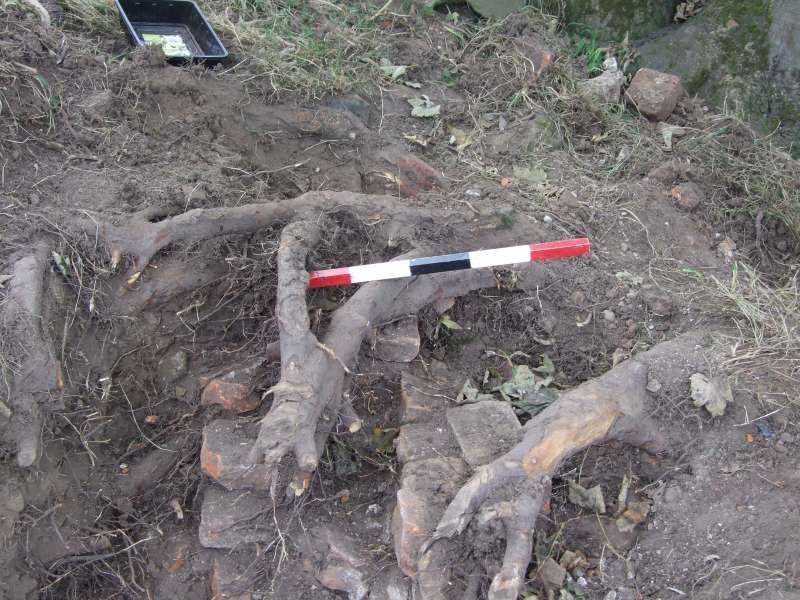
28th September, 2014. More backbreaking work. As we get closer to the trees the ground is getting more and more difficult. Whenever Wyre Archaeology is involved in a dig there are trees and, more importantly, roots. The image above shows part of the Eastern wall with the roots going over the top of it. In some areas, when the roots encounter large stones they go under them - only to reappear and frustrate the digging elsewhere.
5th October, 2014. A flagged floor on the western wall side is uncovered. Our present thinking is that this is probably the older part of the mill (stone rather than brick.)
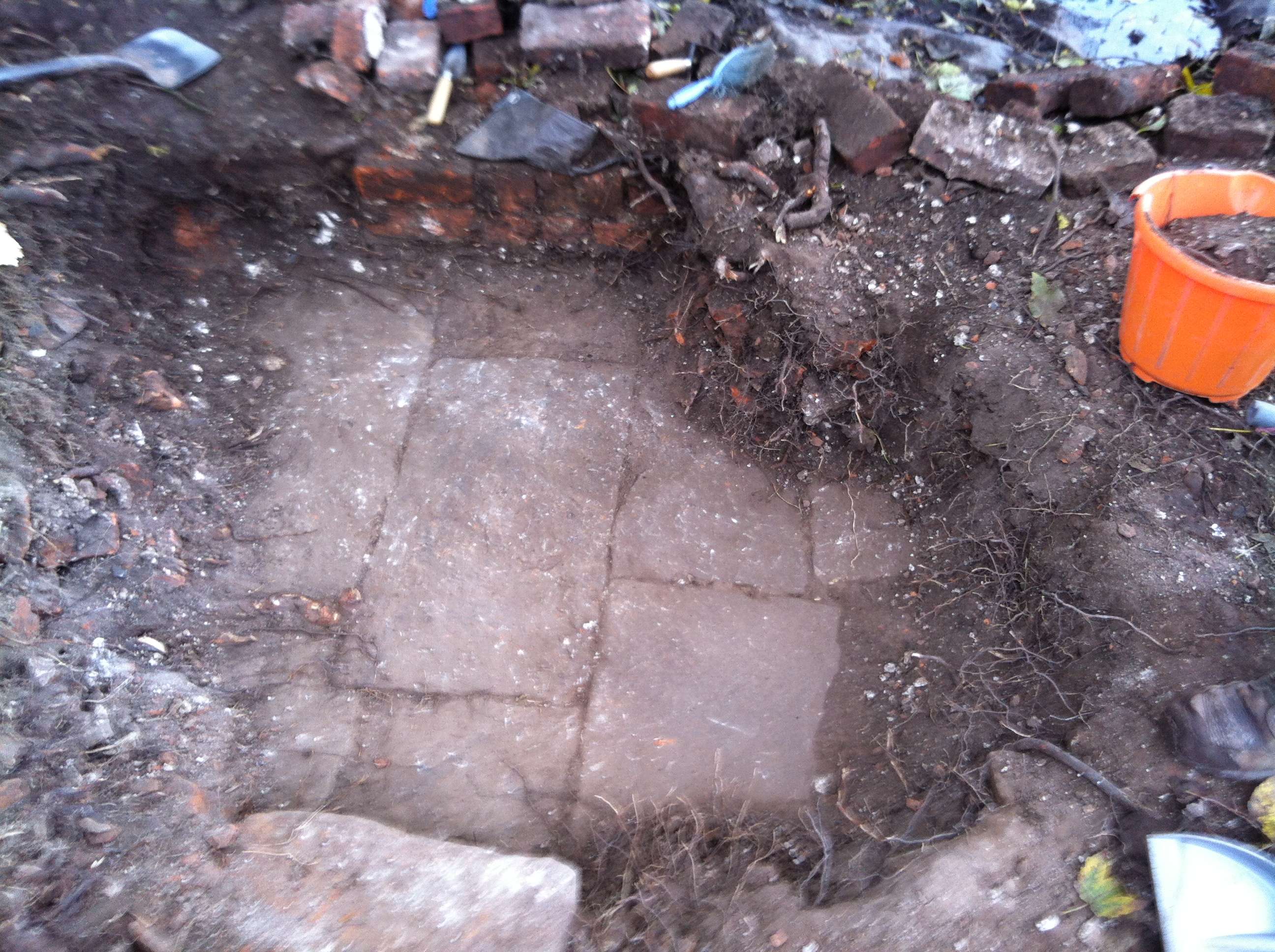
12th October 2014. Again very slow progress. Less than 2 square metres cleared by 3 diggers in the day. The first picture gives a view of the major portion of the site covered up for protection.

The next picture shows more of the revealed Eastern wall. In the middle there appears to be a step but going nowhere. Was there a doorway there originally?
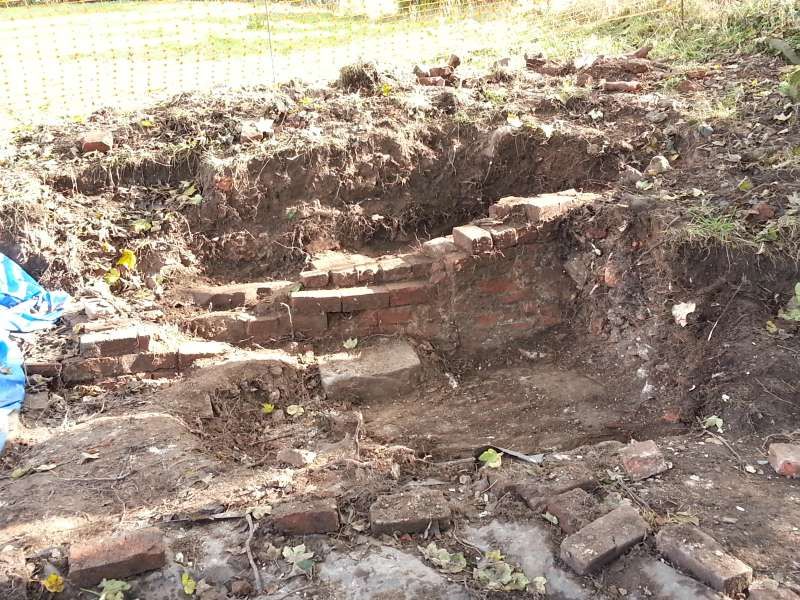
The site was then closed for the winter.
